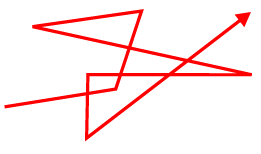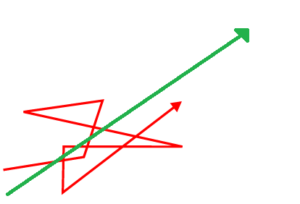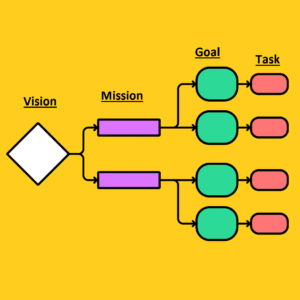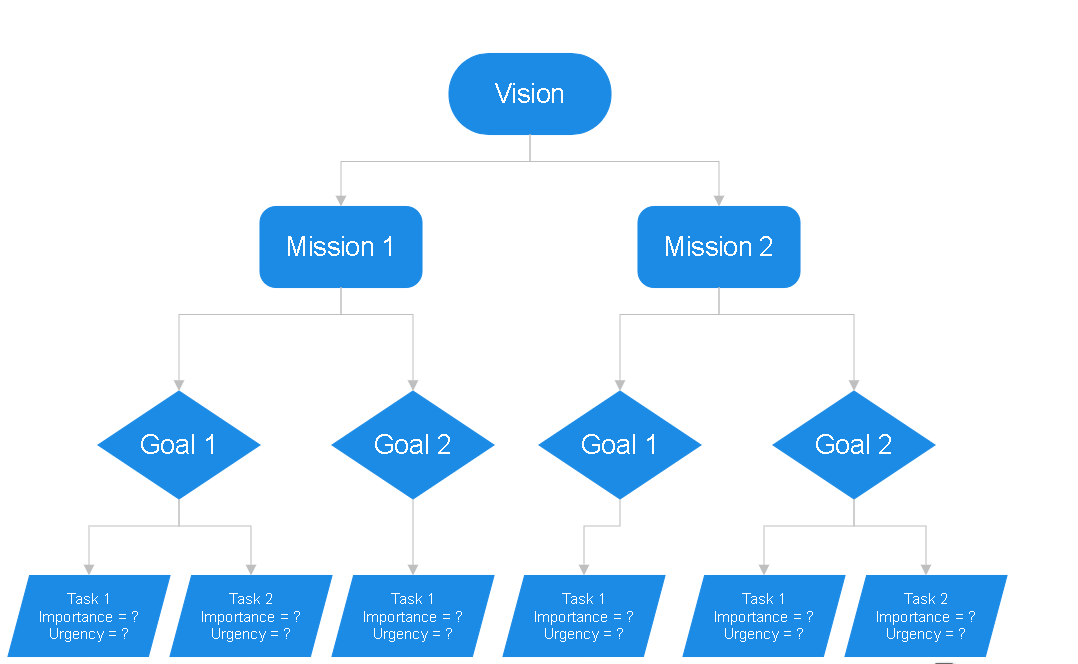Planning
Good fortune is what happens when opportunity meets with planning
Why Plan?
To the right is the illustration of the life of a typical student in university. Whether it be EE, CS, CE, or whatever degree it is. Most students are like:
Lemme see what AI & ML is.. No no… let’s start with Web Dev. Well.. mobile dev seems good too.. Maybe i should learn embedded design. At the end of the day, the expertise of these students are a mile wide and less than an inch deep.


Planning your career doesn’t mean you’ll blindly jus choose one pathway and follow that for the rest of your life. But planning means to actively measure the different factors and circumstances which are affecting you and vigilantly choose the most optimum path. And most importantly, after choosing your path, actively monitor the situation and factors to efficiently improvise your pathway so your plan doesn’t get outdated.
That was probably too much to digest in one sentence. Just understand this: make the most efficient plan and make sure it stays the most efficient plan throughout the timeline.
Top-Down
I assume that everyone understands the basic concept of planning. So, we’ll straight up start with the practical methods of planning your career. You need atleast two basic plans: The Top-Down Goal Planning & The Bottom-Up Execution Planning.
Top-Down approach is fairly simple. You start planning with the broadest vision in mind.
Vision is the future state of your life or your family or your nation or the world. Assuming that you succeessfully implement all of your plans, how would it look like at the end?
Building a vision is the most important part of planning. Most people when asked for their vision, randomly come up with something at that instant. Vision isn’t something you can just think in 2 seconds when someone asks you. That is not a vision. That is just a formality to hide the fact that you don’t have a vision with you.
Take your time to build up a vision. The more time you take, the better. Think of the things that are most valuable to you. Things for which you will happily serve for a big part of your life

Someone’s vision can be “To have a luxurious life with a beautiful wife and a big passive income” or it can be “To have the Islamic system established in the world” or anything that triggers a whole new world inside your mind.
There is a reason why vision is so important. Everything else in your plan lies on this foundation. If your vision isn’t really important for you, if it doesn’t keep you up at night, as you go down the hierarchy of Mission, Goals, and Tasks, the spark gradually decreases and you can’t really keep up the intrinsic motivation to keep up your plan.
Vision doesn’t necessarily have to be achievable or practical. It can be as insane as you want. The criteria for validating your vision is simple. “How important is it for you in the long run?“
Keep these things in your mind and start building your vision
-
- The broader the vision, the better
- Strength of your vision determines the strength of your whole plan
- Does it keep you up at night?
Meet Alex
Alex is a university student just like you. He decided to plan out his career so that he can increase his productivity. He currently isn’t completely sure about what he wants. So, he starts thinking about his vision.
“What should my life look like when i finish my plans?” He asks himself. “Well.. i like technology and engineering.. so, i would be really happy if i end up being a sucessful engineer. Maybe a successful Electrical Engineer.” He thinks “That way i can serve my family and my nation. And i get to work on the thing that i like”. “That seems good”, He thinks.
After thinking on it for a long time, Alex decides that it is his vision for his career. “A happy life as an engineer working on the things that i like with a sustainble income”.

After you have figured out the vision, next steps are fairly simpler. Break down that vision into 3 or less than 3 missions.
What is a mission? A mission is a concise achievable objective that sets the standard on which all of your actions are measured. In other words, any action can be categorized as investment or wastage of resources based on its contribution to the mission.
For example, in the case of Alex, his missions can be
-
-
- Learn the technical skills required to excel in the field of Electrical Engineering
- Expand his social circle and network with the high-profile engineers already working in the field to get market insights
-
In his case, he set down the two most fundametal objectives required to realize his vision. If he manages to complete these two of his missions, the rest is a piece of cake.
The things to keep in mind while setting your missions are
-
-
- Mission should be broad objective
- It should be extremely crucial and fundamental in order to realize your vision
- It should be achievable
-
Write down your mission(s) under your vision statement. Now you have the first two steps of Top-Down Planning figured out. After this, we get to the most difficult technical part of planning which is Goal Planning.
Goal-Planning
In technical terms, goal is a target that needs to be achieved. But not every target can be categorized as a goal. In Goal-Planning, the term “goal” is specifically used for the targets that satisfies certain conditions.
These conditions are really important to keep in mind while setting your goals. These can be remembers using the acronym SMART. Following are the conditions:
- Specific
- Measurable
- Actionable
- Relevant
- Time-Bound


Let’s get back to Alex. For each of his missions, he has to set the goals which will help him accomplish that mission. In his first mission, he needs to gain the technical expertise in Electrical Engineering. He needs to think of the ways he can accomplish this mission.
“I need a good GPA in my degree”, He thinks. But this isn’t a specific goal. Nor is it measurable. So, he makes it a little more specific. “I need 3.5+ GPA in my first semester”. Now that is a valid goal. It is specific & measurable (3.5 GPA), Actionable, Time-Bound (First semester) and Relevant to his mission.
Same way, Alex sets te rest of his goals which he thinks would be crucial for achieving his mission.
There are a few more things you should keep in mind while planning your goals. Conditions given above only tell you if your goal can technically be termed as goal or not. Even if you satisfy all the above requirements for a goal, it doesn’t necessarily mean that the goal is valid and you should put it in your list.
The most important factor in determining whether a goal belongs to your list or not is its relevance to the mission. If achieving the goal will significantly move you closer to your mission objectives, then it is probably a good decision to add it to your list of goals.
In the start, you don’t need a lot of goals. Nor do you need to determine the long-term goals. You just need the goals that will get you closer to your mission in the initial stages. All the gaps will be filled with the passage of time if you stick to the plan and don’t get deviated.
Tasks & Prioritization
The last step in Top-Down Planning is to divide the goals into small tasks which can be completed in a day or less. Optimizing the resources while thinking of the tasks is to be done by yourself.
i.e., if you are aiming to learn Web Development and you are already familiar with MERN development, it is common sense that when setting goals and tasks, you should prioritize MERN development instead of wasting your time to get started with WordPress. Time & Resource optimization is the key.
After deciding the tasks, you need to give assign two parameters for all tasks; importance and urgency. Assign importance based on how much would the task affect the overall progress towards your goal. Assign urgency based on how far away is the deadline for each task.
You can choose the scale by yourself. If it is 1-10 or is it Low-High; Whatever works for you.

At the end of the Top-Down Planning, you’ll end up with a flow-chart like this

